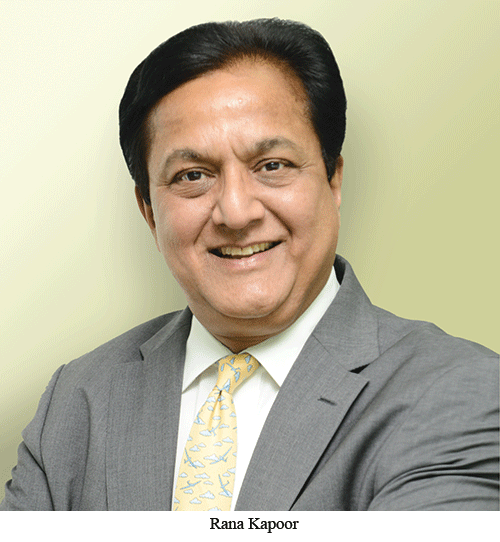 India is poised at a rare moment in its history. Four of every ten Indians today are under the age of 20. This is the world’s largest pool of young people with the potential to transform into an energetic, innovative and entrepreneurial workforce. This demographic revolution is happening in India when much of the population of the developed world is greying. This phenomenon could tip the scales firmly in favour of India in the 21st century.
India is poised at a rare moment in its history. Four of every ten Indians today are under the age of 20. This is the world’s largest pool of young people with the potential to transform into an energetic, innovative and entrepreneurial workforce. This demographic revolution is happening in India when much of the population of the developed world is greying. This phenomenon could tip the scales firmly in favour of India in the 21st century.
But this accidental demographic bounty won’t yield its much-proclaimed ‘dividend’ if this young workforce is not adequately educated. India’s youth need to learn to make their own decisions, think critically and address development problems with creative mindsets. They need to ask the right questions, devise suitable innovations and lead the nation to a higher social purpose.
Despite post-independence India’s population having grown from 360 million in 1951 to 1.2 billion in 2011, the country has made some progress in education. During the past 68 years, adult literacy has risen from a mere 12 to 74 percent. In more recent years, India’s focus on the United Nation’s Millennium Development Goals (MDGs) agreed at the UN Millennium Summit in 2000 in New York, have pushed successive governments at the Centre to do better to achieve these goals. The Sarva Shiksha Abhiyaan (universal literacy mission) launched in 2000-01, and the Right of Children to Free and Compulsory Education (RTE) Act, 2009, have attracted substantial resources to realise the MDGs.
At the same time, high GER (gross enrolment ratio) in primary schools is not enough. The quality of education dispensed is as — if not more — important in ensuring the large resources allocated for primary-secondary education by the Central and state governments are well spent and result in improved learning outcomes. As the well-known British educationist and thinker Sir Ken Robinson observes, “All children start their school careers with sparkling imaginations, fertile minds, and a willingness to take risks with what they think.”
The poor learning outcomes of India’s primary-secondary children reported by Pratham’s Annual Status of Education Report (ASER) and the Union HRD ministry’s National Achievement Survey 2015 are not the failure of children, but of education policy formulators and the ‘system’. Some of India’s greatest educationists — Rabindranath Tagore, J. Krishnamurti and Sri Aurobindo — stressed that routine academics apart, out-of-school experiential learning and critical thinking are essential components of well-rounded education. These education philosophers believed that encouraging curiosity and freedom of enquiry, allowing children to learn what they like to learn, and training them to become good citizens who will promote international co-operation, impart value and meaning to education.
Unfortunately post-independence India’s education system has ignored the wisdom of these savants. Instead, we have an education system focused on prescribed curriculums and standardised testing. To train millions of young people simultaneously, our policy formulators opted for quantity rather than quality as the primary goal of education. As a result, an alarming 50 percent of the country’s 230 million children who begin primary education every year drop out of school by class VIII.
Even Kerala, the first state in India to achieve 100 percent literacy, has now started to re-think its education priorities. Increasingly, the state government’s focus is shifting towards upgrading the quality of teaching-learning processes and improving the infrastructure of government schools.
In neighbouring Tamil Nadu, more than 38,000 state schools have switched to ‘Activity-based Learning’ (ABL) based on Krishnamurti’s education philosophy. ABL combines innovative pedagogy, peer-to-peer learning and experiential education. Endorsed by UNICEF, it is being implemented in several other states including Karnataka, Kerala, Uttar Pradesh, Gujarat and Madhya Pradesh.
Nevertheless, new pedagogies and innovation are exceptions rather than the rule. Despite some cross-pollination of ideas, best practices in contemporary education are implemented in only a few islands of excellence.
The need to research new pedagogies and innovation in education has prompted the establishment of the YES Institute, the practising think-tank of YES Bank. We believe developing a broader vision of education within the Indian cultural context is the way forward. After all, few civilisations can claim a tradition of educational excellence stretching back over several millennia.
Much of the subcontinent’s cultural capital is imprisoned in under-used museums. Such cultural repositories can be utilised to highlight knowledge and pedagogies rooted in our ancient culture. We can also use museums to spark children’s curiosity, research and critical thinking skills.
Recently, YES Institute celebrated International Museum Day by inviting over 150 teachers from government and private schools in and around Delhi to discuss and debate newer ways of learning. The institute is now planning to expand the outreach of this programme to other cities.
Rana Kapoor is co-founder and managing director of YES Bank

























